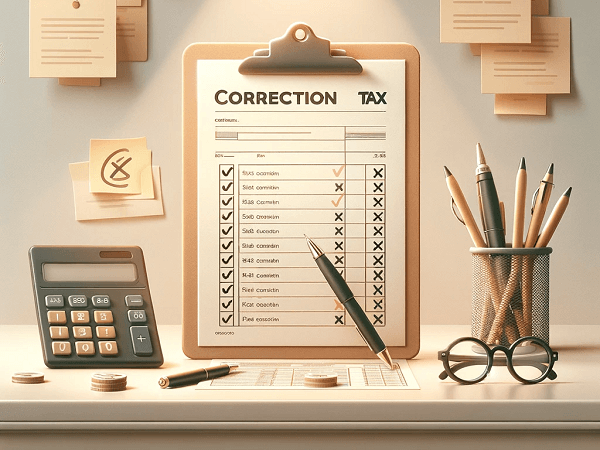Discovering mistakes on your previous year’s tax return can be stressful, but it’s important to know that you have the opportunity to correct them. By following the proper procedures outlined by the IRS, taxpayers can amend their tax returns and either claim a refund or pay additional tax liabilities. This article provides a step-by-step guide on how to correct a tax mistake from the previous year.
Download and Fill Out IRS Form 1040X
Taxpayers should start by downloading IRS Form 1040X, also known as the Amended U.S. Individual Income Tax Return. This form can be found on the IRS website. It’s crucial to file the amended return by April 15 of the following tax year to avoid any penalties. Only file Form 1040X if you have already filed your tax returns for the previous year and need to make changes to your filing status, taxable income, claim or deduct credits, or correct deductions.
Provide Personal Information and Tax Year
Once you have the form, fill out your full name, address, telephone number, and social security number on the top half of the form. Check the box that corresponds to the tax year you are amending. If you filed a joint return, include your spouse’s tax information as well.
Correct Filing Status and Income
Check the appropriate box for your filing status. If you are not changing your filing status, select the box that matches the status used on your original return. Note that if you filed jointly, you cannot amend your filing status to file separate tax returns. Complete Lines 1 through 5 by entering the original amounts from your previous year’s tax return in Column A. In Column B, enter the net changes reflecting the total decrease or increase for each line item. If you need to amend your income, exemptions, or deductions, complete Lines 1 through 5.
Correct Tax Liabilities and Other Details
Proceed to complete Lines 6 through 10 to correct your tax liabilities. Make sure to fill in Columns A through C accurately. If you need to amend your withholdings or social security taxes, complete Line 11. For those making estimated payments, complete Line 12 by including previously paid estimated taxes in Column A and entering the net difference in Column B. Enter your liabilities in Column C. If you are claiming the Earned Income Credit for the first time, complete Line 13 and attach Schedule EIC of Form 1040.
Provide Explanation and Supporting Documents
Complete Line 16 by entering your total payments based on Column C and Lines 1 through 15. In Part III, provide a detailed explanation of the changes you are making to your return. Attach any supporting schedules or documents that justify your reasons for amending your return. If you made a mistake and believe you should not pay penalties for being late, include any relevant information.
Sign, Compile, and Mail Your Amended Return
Sign and date your amended return. If you filed a joint return, your spouse must also sign and date the form. Compile your amended tax return packet by including any corrected tax forms, such as W-2s or 1099s, and any additional documentation, schedules, or forms that support Part III. If you owe taxes, enclose a check or money order without attaching it to any forms. Finally, mail your tax return, as amended returns cannot be filed electronically. Use the IRS’s interactive map to find the address for your local IRS service center. The IRS typically processes amended returns within 8 to 12 weeks from the date of receipt.
By following these steps, taxpayers can correct any mistakes on their previous year’s tax returns and ensure that they receive the appropriate refunds or pay any additional tax liabilities owed. Remember to consult with a tax professional or the IRS if you have any specific questions or concerns throughout the process.




